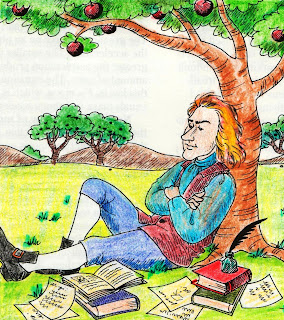For my third critical media blog I chose the Time Magazine article titled How the Casey Anthony Murder Case Became the Social-Media Trial of the Century http://www.time.com/time/nation/article/0,8599,2077969,00.html#ixzz1PZl2sakF
This article details the fascination the public and the press have with murder trials. This trial requires tickets for entry into the courtroom. Hundreds of people show up each day to watch the murder case unfold. But only those who arrive well before 8 a.m. and wait can get a pass allowing them into the top-floor courtroom where Anthony is trying to avoid the death penalty.
Anthony is accused of murdering her 2-year-old, Caylee, in 2008. In December of that year, investigators found parts of the girl's duct-taped corpse near Anthony's parents' home. The sheer horror at the act — and the idea that a mother committed it — catapulted the case from local live-at-5 sideshow to tabloid sensation to national preoccupation. The case is being followed by millions on live-stream video feeds and constant cable-news reports. In the past few days, the Washington Post and the Miami Herald have become the latest major outlets to begin offering live streams of the case. CNN and NBC air so much coverage of the trial that the networks each decided to erect a two-story, air-conditioned structure in a lot across from the courthouse.
The media mentioned above are relative latecomers to what is the first major murder trial of the social-media age. The first public mention of the case appeared on MySpace on July 3, 2008, when Cindy Anthony, Casey's mother, posted a distraught message saying her daughter had stolen "lots of money" and wasn't allowing her to see her granddaughter. Today, the latest and most reliable news of the trial comes from a Twitter account, NinthCircuitFL. That's the feed managed by the 9th Judicial Circuit Court, which has some 400 reporter-blogger followers. The various Facebook pages honoring Caylee have amassed tens of thousands of friends, and Twitter accounts like CaseyJunky and OSCaseyAnthony (managed by the Orlando Sentinel) are adding followers at a rate of hundreds per day.
Within the Casey Anthony article the author includes links to further his theory that this case is the social-media trail of the century. Links such as “Are Americans overly obsessed with the Casey Anthony trial?” are used to emphasize the author’s point of view. The author also includes links for reference TIME's photo-essay "Moms Who Kill.", the top 10 unsolved crimes, the top 10 crime stories of 2010, pictures of crime in Middle America, the top 10 crime duos, why most child abuse goes unreported, and top 25 crimes of the century.
These links are strategically placed within the article to direct the reader to more media content. Serafini (2011) notes, that meaning is derived from the position of images in the temporal sequence of written text. The meaning is derived from the spatial relations or grammar of visual images.
These links are strategically placed within the article to direct the reader to more media content. Serafini (2011) notes, that meaning is derived from the position of images in the temporal sequence of written text. The meaning is derived from the spatial relations or grammar of visual images.
The magazine website solicits subscriptions and has a number of advertisements on every page just like every other online media of today. I found the website to be very user friendly and resourceful. The site contains links for the most popular searches, both most read and most e-mailed. Viewers of the site can also see recommendations of their friends via Facebook social plugin. The Time Inc. site provides news from their partners (CNN, Huffington Post, AOL News, Rotten Tomatoes) as a one-stop visual shop for its readers. Seglem (2009) states, that the world is made up of visual symbols that require more complex thinking skills than traditional literacy requires. This one-stop shop strategy is also the focus of the Stay Connected with Time.com section at the bottom of the website page. This section offers RSS feeds, sign up for newsletters, Time widgets, Time mobile, Facebook fan, and Twitter updates.
References
Seglem, R. & Witte, S. (2009). You gotta see it to believe it: Teaching visual literacy in the English classroom. Journal of Adolescent & Adult Literacy, 53(3), 216-226. doi:10.1598/JAAL.53.3.3
Serafini, F. (2011). Expanding perspectives for comprehending visual images in multimodal texts. Journal of Adolescent & Adult Literacy, 54(5), 342-335. doi:10.1598/JAAL.54.5.4










